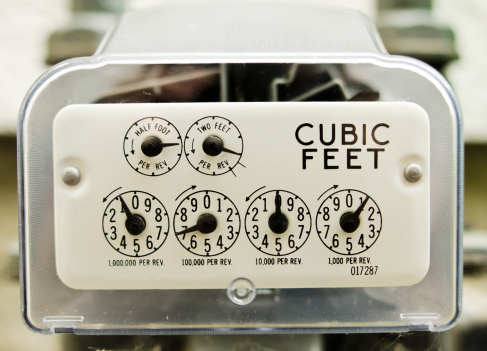

In this Edition
Construction
Management Specialists
111 Pine Street, Suite 1315
San Francisco, CA 94111
(415) 981-9430 (San Francisco office)
1663 Eureka Road
Roseville, CA 95661
(916) 742-1770 (Sacramento office)
9449 Balboa Avenue, Suite 270
San Diego, CA 92123
(619) 518-5648 (San Diego office)
8538 173rd Avenue NE
Redmond, WA 98052
(206) 571-0128 (Seattle office)
2063 Grant Road
Los Altos, CA 94024
(650) 386-1728 (South Bay office)
9705 Cymbal Drive
Vienna, VA 22182
(703) 268-0852 (Washington, DC office)
www.TBDconsultants.com
Condo development was hit badly when the Great Recession hit, as were most other sections of the construction market, but while other sections are rebounding nicely, the condo market is lagging behind. What are the reasons for that?
New from abroad has been hitting the headlines a lot recently. In this article we look at how events at home and abroad are likely to affect the construction market.
California Schools Energy Boost
Starting in fiscal year 2013-14, and running for five years, about $550M is being allocated annually to the Clean Energy Jobs Creation Fund. Of that money, 89% will be allocated to LEAs (Local Education Agencies). These include county offices of education, school districts, charter schools, and state special schools. The remaining 11% goes to the CCCCO (California Community College Chancellorís Office). That money is for energy efficiency and clean alternative energy projects (including energy planning, training and management) in or at school or college sites and office facilities with the goal of reducing operating costs and improving health and safety conditions. In addition, $28M is being provided for low- or no-interest loans and technical assistance (for LEAs and Community Colleges) to the California Energy Commission. $3M goes to the CWIB (California Workforce Investment Board) for a grant program towards training disadvantaged youth, veterans, and others for entry-level jobs in the clean energy and green building fields. Lastly, $5M goes to the California Conservation Corps for energy surveys and other energy conservation-related activities for public schools.
These funds are made available as a result of the California Clean Energy Jobs Act 2013, which stems from Proposition 39, approved by the voters in the November 2012 election. That changed corporate income tax code, raising taxes on out-of-state corporations operating in California.
Funding for LEAs is calculated as follows: 85% based on ADA (average daily attendance for prior year) and 15% based on number of students eligible for FRPM (free and reduced-priced meals program).
There are also minimum funding levels that apply, so the calculation for how much a LEA gets, is as follows:
Tier 1 (100 or less ADA) $15,000 plus FRPM allocation Tier 2 (101-1,000 ADA) based on ADA (minimum $50,000) plus FRPM allocation Tier 3 (1,001-1,999 ADA) based on ADA (minimum $100,000) plus FRPM allocation Tier 4 (2,000 or more ADA) based on ADA plus FRPM allocation LEAs with fewer than 1,000 ADA can combine funding for 2 years in the first year.There is an 8-step process for LEAs to utilize their allocated funds:
Step 1: Give signed release forms to allow the Energy Commission to access the previous yearsí billing data and on through 2023 for all electric, natural gas, propane and fuel oil accounts for all of the LEAís schools and facilities (not just those planning to utilize Prop 39 funds). Step 2: Benchmark the energy usage for facilities that will use Prop 39 funds, the benchmarking to include energy-cost/square-foot/year and Kbtus (thousand British thermal units)/square-foot/year Step 3: Prioritize the list for energy projects (i.e. what gives the best bang for the buck). Step 4: Sequence the improvements, starting with those that maximize energy efficiency (such as daylighting or energy management systems, upgrading HVAC systems and water heaters, even replacing windows), followed by clean energy generation (e.g. photovoltaics or solar water heating), and finally projects using nonrenewable resources (such as a natural gas-fueled fuel cell). Step 5: Identify eligible energy projects by utilizing an energy survey, an ASHRAE Level 2 energy audit, or data analytics (a Web-based virtual energy audit), as appropriate.
Step 6: Determine the cost effectiveness of the proposed projects, realized over the life of the eligible energy project. Projects must meet a SIR (savings-to-investment ratio) of at least 1.05.
Step 7: Submit an energy expenditure plan to the Energy Commission for approval. The plan may cover one year or multiple years, and in the latter case it will be reviewed annually by the Energy Commission. As part of the plan, the number of trainees and full-time employees engaged in the projects will be considered, because job creation is another part of the programís goals. Step 8: LEAs are to submit a report on project expenditure within specified time limits following completion of a project showing the actual energy savings, and they are to submit annual progress reports on all projects. When reporting the energy savings, the savings related to the individual project is to be shown, along with the savings for the school as a whole. Final reports shall also include information on the number of workers that were involved with the project.
Design consultant: Katie Levine of Vallance, Inc.